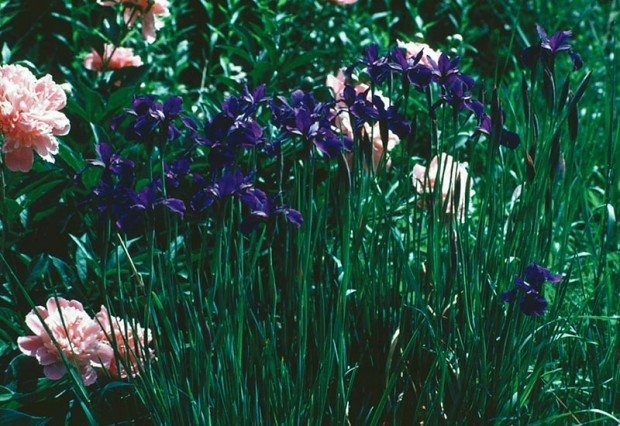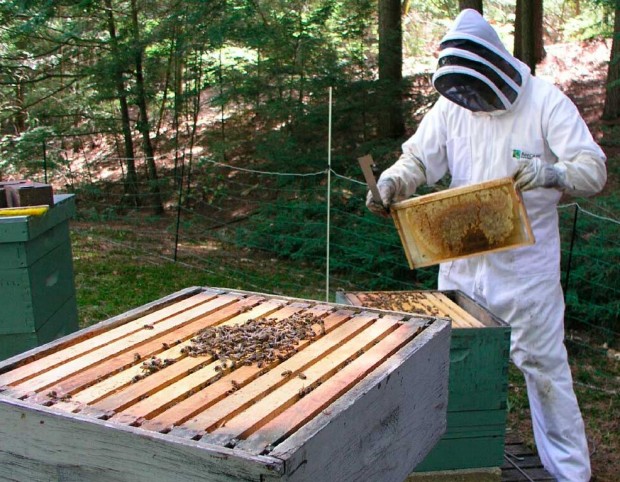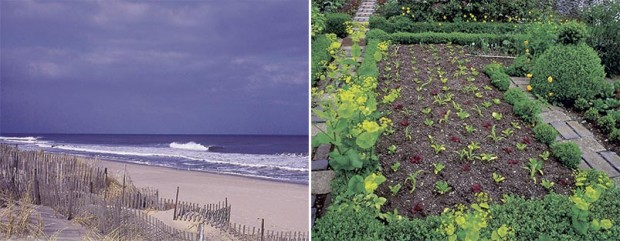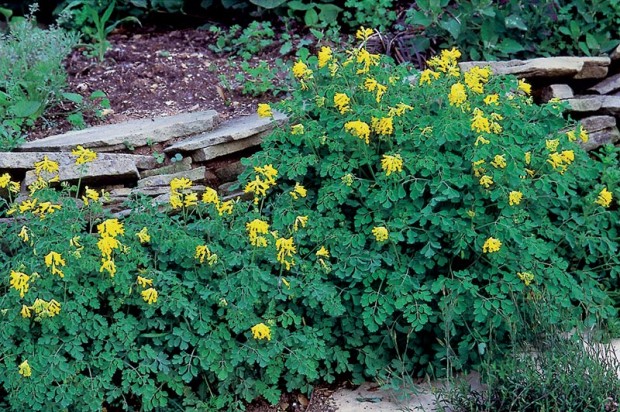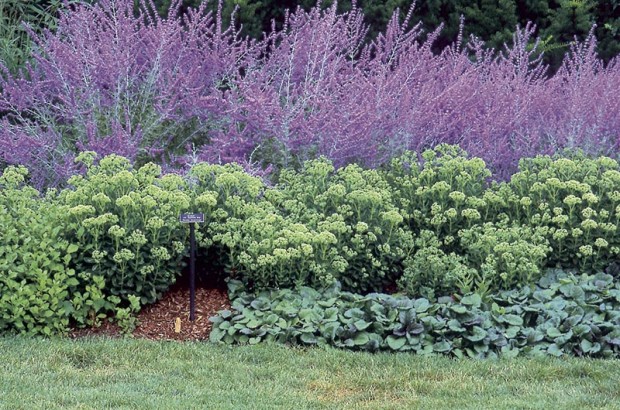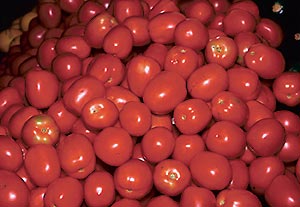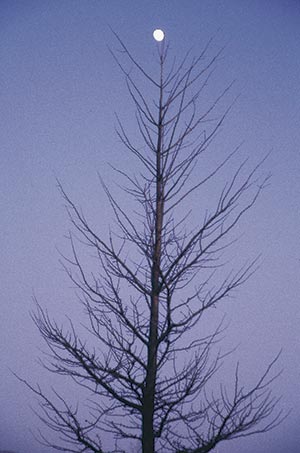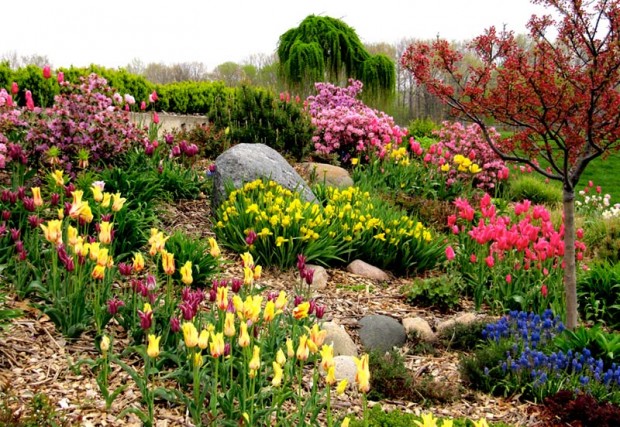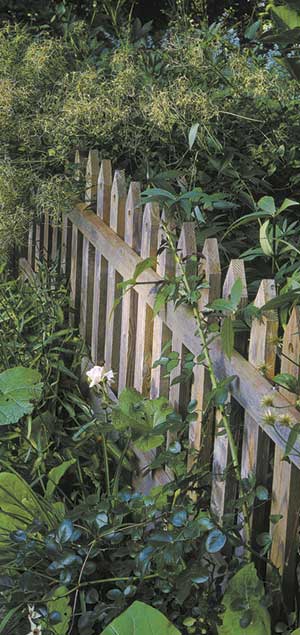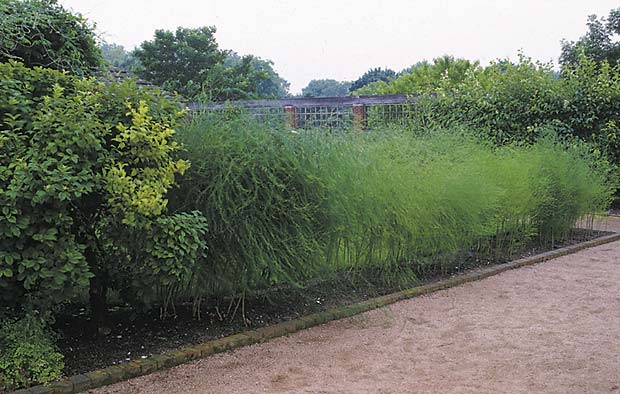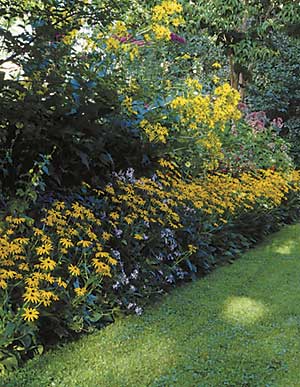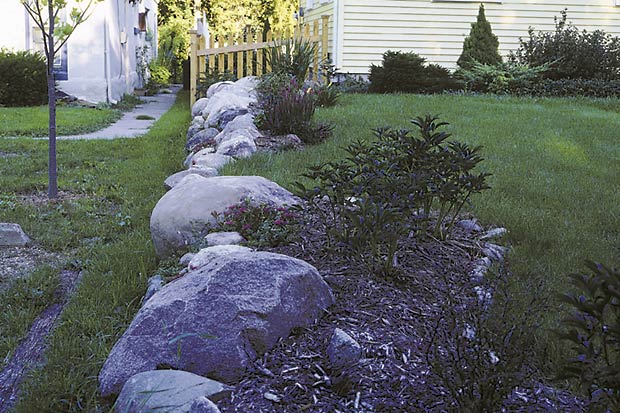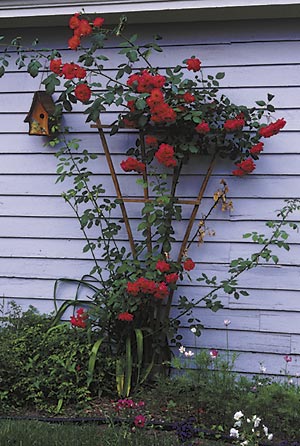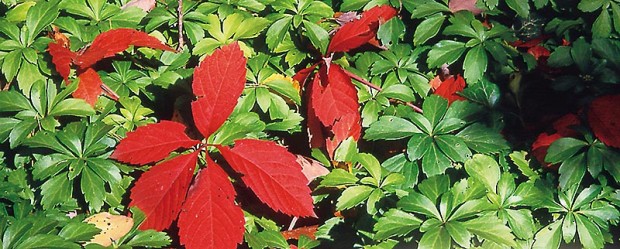
My hobby-turned-profession has brought me up close and too personal with so many surprisingly dangerous plants that I’ve cultivated a downright awe of plant defenses. Each time I encounter another plant-based allergic reaction, skin irritation or chemical burn, my library and files swell with more books and articles. In pursuing one or another plant, I’ve come across cautions on so many other, common garden plants and said “Ah ha, so that’s what that other thing might have been!” so many times that I thought you would be interested in some of the discoveries too.
In listing these plants I do not intend to put an end to your enjoyment of any plant, but to point out where precautions might be in order. You’ll probably even find that to eliminate all potentially harmful plants from your garden or landscape would be very difficult, simply because so many plants have potential to cause harm. Better to learn safe ways to interact with plants—wear gloves, cover your arms and legs while pruning and gardening, wash well after being in the garden, and eat only known edible plants.
So knowledge is your best defense against plant defenses, and you should be prepared to learn more every time you add another plant to your garden or yard. Start by learning the several categories of dangerous plants: 1) those we shouldn’t allow to contact our bare skin, 2) those with pollen or other airborne elements that can cause distress if inhaled, and 3) plants we shouldn’t eat.
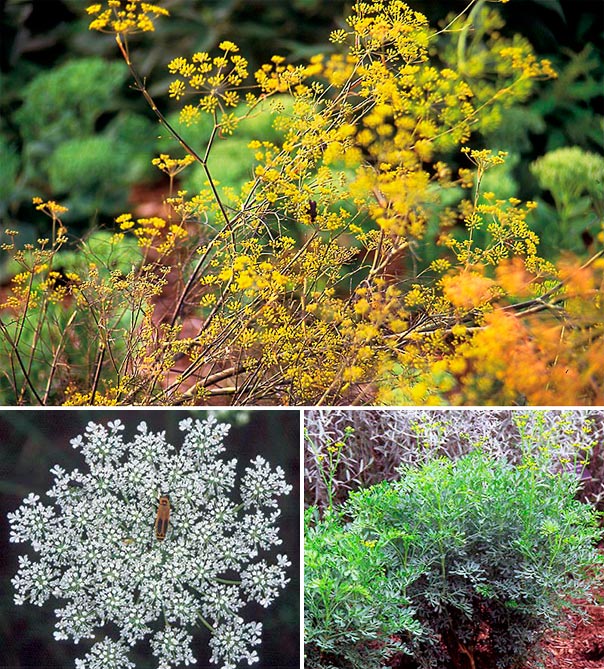
Plants we shouldn’t allow to contact our bare skin
Of these three groups, we are most likely to come across those that irritate or inflame the skin on contact. That’s because we often expose bare skin when we garden and it’s not necessary to be allergic to react to many of them. The trouble with these plants are chemicals in their saps, thorns or prickles, or needle-like crystals contained in the cells which can seep out when the plant is bruised or cut.
Plants with irritant sap. These should be handled carefully if they must be cut. Avoid getting sap from cut stems or bruised leaves of any of the following on your skin:
• Buttercup (plants in the genus Ranunculus)
• Clematis
• Daffodil (Narcissus species)
• Daphne (D. mezereum)
• Euphorbias, such as gopher or mole plant (E. lathyris) and myrtle euphorbia (E. myrsinites)
• Marsh marigold (Caltha palustris)
If you think you may have contacted the sap, flush affected skin with water and wash it with a mild soap. Hydrocortisone cream may help relieve the irritation if it develops. Seek medical attention if the reaction is severe.
Phototoxic plants. Some plants have sap or oil that is not in itself irritating, but once on the skin and exposed to any sunlight, it can cause a chemical burn. The burn can be severe enough to raise blisters on sensitive skin, such as on the face or on a young child. The worst reactions happen after gardening on hot, sunny days since heat tends to bring the most oil to leaf surfaces and sun is the trigger to burning on the skin. If you have noticed burn-like marks or felt a burning sensation after a day’s gardening, you may have come into contact with:
• Angelica
• Bishop’s weed (Ammi majus)
• Celery (Apium graveolens)
• Chervil (Anthriscus cerefolium)
• Fennel (Foeniculum vulgare)
• Fig (Ficus species)
• Gas plant (Dictamnus albus)
• Hogweed (Heracleum species)
• Lime (Citrus species)
• Lovage (Levisticum officinale)
• Masterwort (Astrantia species)
• Parsley (Petroselinum crispum)
• Queen Anne’s lace (Daucus carota)
• Rue (Ruta graveolens)
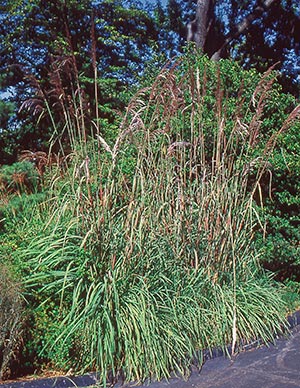
Prickly plants. We tend to be careful around plants with visible thorns such as roses, firethorn and barberry, but here are some with tiny but irritating bristles or sharply serrated leaf edges that may not alarm us until we handle them without gloves or brush against them:
• Prickly pear cactus (Opuntia species)
• Hops (Humulus lupus)
• Ravenna grass (Erianthus ravennae)
• Redtwig dogwood (Cornus sanguinea)
• Stinging nettle (Urtica dioica)
Other plants that cause contact dermatitis in some people may do so because of the bristly nature of their leaves (see list below).
Tiny spines, as from cactus, can be removed by applying and removing adhesive tape or spreading and allowing white glue to dry on the skin, then peeling it off.
Plants containing needle-like crystals. Intense, painful itching can come from bruising or cutting these plants, because their cells contain needle-sharp crystals:
• Elephant’s ear (Colocasia esculenta)
• Dumb cane (Dieffenbachia species)
• Pothos (Epipremnum aureum)
• Heartleaf philodendron (Philodendron scandens)
• Virginia creeper and Boston ivy (Parthenocissus species)
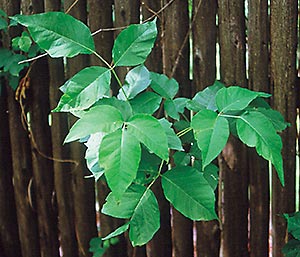
Plants that cause allergic dermatitis. Some plants contain chemicals or have surface irritants which trigger allergic rashes in some, but not all people. Generally, reactions occur after the person becomes sensitized to the plant—it may take one or many contacts with a plant over many years to develop the sensitivity. The skin reacts most severely and most quickly where the most contact occurred, so that some parts of the body may “erupt” in a rash or blisters hours or days before another.
Poison ivy (Toxicodendron radicans) and its relatives cashew (Anacardium occidentale), smoke tree (Cotinus species), mango (Mangifera indica), and poison sumac (Toxicodendron vernix) are the most famous of these because they produce the most severe reaction among the widest range of people, but many other cultivated plants have been reported by doctors as causing irritated or inflamed skin. These include:
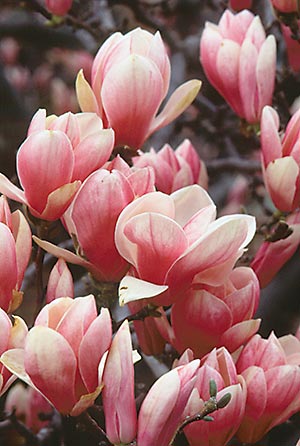
• Artemisia (including the most notorious member of the genus, ragweed)
• Aster
• Balsam fir (Abies balsamea)
• Black walnut (Juglans nigra)
• Black-eyed Susan (Rudbeckia species)
• Blanket flower (Gaillardia species)
• Bleeding heart (Dicentra species)
• Castor bean (Ricinus communis)
• Daisy (Leucanthemum species)
• English ivy (Hedera helix)
• Feverfew (Matricaria species)
• Fleabane (Erigeron species)
• Garlic (Allium sativum)
• Gingko (Gingko biloba)
• Golden marguerite (Anthemis tinctoria)
• Helen’s flower (Helenium autumnale)
• Hyacinth (Hyacinthus species)
• Hydrangea
• Lady’s slipper (Cypripedium species)
• Magnolia
• Marigold (Tagetes species)
• Moses-in-a-boat (Rhoeo spathacea)
• Mullein (Verbascum species)
• Mum (Dendranthema/Chrysanthemum species)
• Oleander (Nerium oleander)
• Osage orange (Maclura pomifera)
• Pawpaw (Asimina triloba)
• Potato
• Primrose (Primula species)
• Purple heart (Tradescantia pallida)
• Tansy (Tanacetum vulgare)
• Tomato
• Trumpet vine (Campsis radicans)
• Tulip (Tulipa species)
Plants we shouldn’t inhale.
Plants with airborne pollen, such as ragweed, grasses and many conifers, can cause allergic respiratory distress. Those who suffer from pollen allergies should garden and landscape with plants visited by bees, moths, butterflies and hummingbirds, because such plants have heavy pollen which does not float but needs a lift to the next plant. Hosing down areas before working or playing outdoors can also be helpful, as wet pollen is less likely to waft into the air.
Plants we shouldn’t eat.
Although garden plants that, if eaten, can cause severe intestinal distress, nervous disorders and even death may get the most publicity of all dangerous plants, they are the most easy to live with—just don’t eat them! Never taste or eat any plant unless you are certain of its identity and safety.
Some plants are more dangerous than others, for various reasons. Tiny quantities of one species such as monkshood can cause great harm, while large quantities of another such as apple seeds or privet berries must be eaten to produce even mild side effects. In a few poisonous species such as anemone, calla, caladium, and Jack-in-the-pulpit, the symptoms are called “self-limiting,” meaning that it’s very tough to eat enough of the plant to cause life-threatening trouble since the plant is extremely distasteful or causes immediate burning and blistering on the tongue and lips.
The result of eating some toxic species may be gastrointestinal distress, which may be serious in young children and weakened adults, but may amount only to a tough lesson learned to other people. Some plant-produced toxins can cause circulatory or nervous system disorders as well and so are more serious. Some plants are toxic from top to roots, such as water hemlock. In others, poisons are concentrated enough to cause serious harm only in certain parts of the plant, even unlikely parts to eat, such as cherry and peach pits which contain cyanide.
Here are some of the most dangerous poisonous plants you may be growing, or which may be growing wild in your area, and the toxic parts:
• Adonis (Adonis species) – all parts
• Baneberry/Doll’s eyes (Actaea species) – berries and roots
• Buttercup (Ranunculus species) – sap
• Castor bean (Ricinus communis) – seeds
• Chinese lantern (Physalis species) – unripe fruits
• Daphne (Daphne mezereum) – all parts
• Datura, Jimsonweed, Angel’s trumpet, Devils’ trumpet (Datura and Brugmansia species) – all parts
• Fall crocus (Colchicum species) – all parts
• Flower tobacco (Nicotiana species) – all parts
• Foxglove (Digitalis species) – all parts
• Golden chain tree (Laburnum species) – all parts, toxins concentrated in seeds
• Hydrangea – flower buds
• Japanese andromeda (Pieris species) – leaves and nectar
• Lenten rose, Christmas rose (Helleborus species) – all parts
• Leucothoe – leaves and nectar
• Lily-of-the-valley (Convallaria majalis) – all parts, including water in the vase in which the flowers are held
• Monkshood (Aconitum species) – all parts
• Mountain laurel (Kalmia species) – leaves and nectar
• Oleander (Nerium oleander) – all parts, including water in the vase in which the flowers are held
• Pokeweed (Phytolacca americana) – leaves and roots
• Rhododendron and azalea (Rhododendron species) – leaves and nectar
• Star of Bethlehem (Ornithogalum species) – all parts
• Water hemlock (Cicuta species) – all parts
• Yew (Taxus species) – all parts except red portion of fruit
Janet Macunovich is a professional gardener and author of the books “Designing Your Gardens and Landscape” and “Caring for Perennials.” Read more from Janet on her website www.gardenatoz.com.

